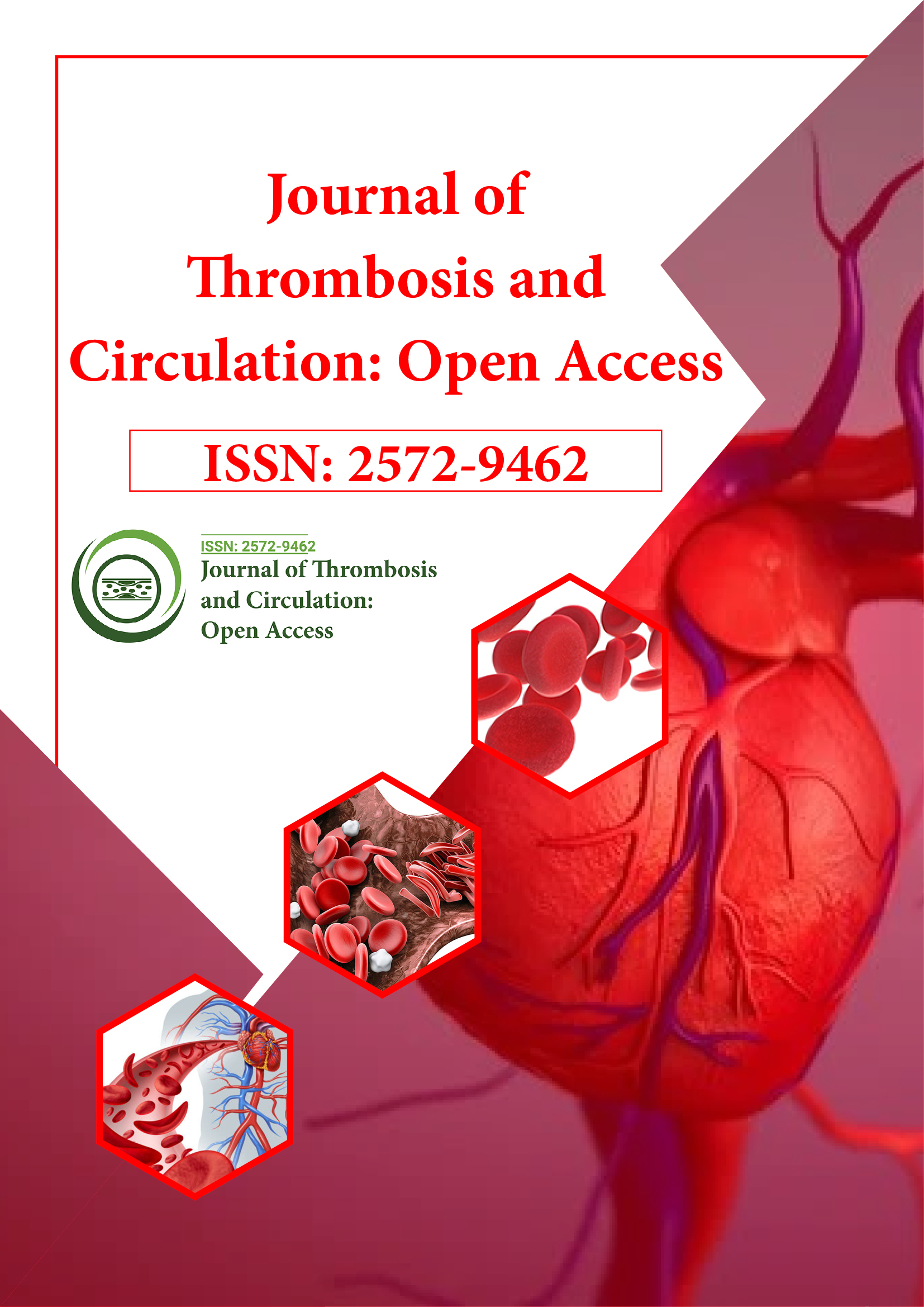Indexed In
- RefSeek
- Hamdard University
- EBSCO A-Z
- Publons
- Google Scholar
Useful Links
Share This Page
Journal Flyer

Open Access Journals
- Agri and Aquaculture
- Biochemistry
- Bioinformatics & Systems Biology
- Business & Management
- Chemistry
- Clinical Sciences
- Engineering
- Food & Nutrition
- General Science
- Genetics & Molecular Biology
- Immunology & Microbiology
- Medical Sciences
- Neuroscience & Psychology
- Nursing & Health Care
- Pharmaceutical Sciences
Case Report - (2021) Volume 7, Issue 6
The Utilization of Direct Oral Anticoagulants for Thromboprophylaxis or Therapy of Malignant Growth Related Venous Thromboembolism: A Meta-Examination and Survey of the Rules
Shiva Sai*Received: 02-Nov-2021 Published: 23-Nov-2021
Introduction
Venous thromboembolism (VTE) is a typical confusion among patients with malignant growth and is one of the most widely recognized reasons for expanded grimness and mortality. The utilization of direct oral anticoagulants (DOACs) for thromboprophylaxis and therapy of malignant growth related venous thromboembolism (CA-VTE) has been assessed in a few randomized clinical preliminaries (RCTs). The point of this metainvestigation was to survey adequacy and wellbeing of utilizing DOACs for thromboprophylaxis and treatment of CA-VTE and give a synopsis to accessible rules proposals.
Venous thromboembolism (VTE), including profound vein apoplexy (DVT) and pneumonic embolism (PE), is a typical confusion among patients with disease and is one of the most widely recognized reasons for expanded bleakness and mortality. The danger factors for VTE are multifactorial and incorporate malignant growth itself, chemotherapeutic specialists, and patient-explicit qualities, like female sex, more seasoned age, and comorbidities like diabetes and atherosclerosis. The administration of VTE in patients with disease is trying because of an expanded danger of draining and VTE repeat [1]. Low-atomic weight heparin (LMWH) has been the highest quality level therapy for disease related VTE (CA-VTE) and is suggested over nutrient K enemy (VKA) based on proof from a few randomized controlled preliminaries (RCTs). Be that as it may, thinking about the patient inclination, accessibility of oral anticoagulants, cost, and the danger of thrombocytopenia, the utilization of this specialist probably won't be the most ideal choice in disease patients with VTE [2].
Data sources and study selection
A deliberate survey was led utilizing MEDLINE to recognize studies assessing the utilization of DOACs for thromboprophylaxis or therapy in patients with disease and announcing VTE and draining occasions. The accompanying pursuit terms were utilized: malignant growth, venous thromboembolism, pneumonic embolism, lowatomic weight heparin, enoxaparin, dalteparin, tinzaparin, factor Xa inhibitors, apixaban, betrixaban, dabigatran, edoxaban, and rivaroxaban. For CA-VTE therapy, RCTs were incorporated, and for thromboprophylaxis, RCTs and studies with subgroup investigations revealing adequacy and wellbeing information on patients with dynamic disease just as post-hoc examinations of RCTs were incorporated. The hunt was restricted to peer-checked on examinations distributed in English. Studies were avoided assuming that they were not RCTs or subgroup investigations of information got from RCTs, in case they didn't report viability and security information on patients with dynamic malignant growth, or on the other hand in case they were distributed as a theoretical. Each study was evaluated for qualification freely by two creators [3].
Statistical analysis
The Mantel-Haenszel arbitrary impacts model danger proportions (RRs) and the relating 95% certainty stretches (CIs) were determined utilizing the metan routine in Stata programming, variant 14.2 (StataCorp LLC, College Station, Texas, United States) to assess the pooled treatment impacts of DOACs. The danger of-predisposition evaluation was led for each study utilizing the Cochrane Collaborations device, and a pipe plot was utilized to survey distribution inclination [4].
Conclusion
This meta-examination featured the viability and security of DOACs for thromboprophylaxis and treatment of CA-VTE. DOACs showed a lower hazard of VTE repeat than LMWH and a lower hazard of suggestive VTE than LMWH or fake treatment. Be that as it may, the danger of draining remaining parts a significant concern. Clinical choices on the utilization of DOACs for CA-VTE treatment or prophylaxis ought to be founded on individual appraisal of the patients hazard for VTE and dying, utilizing approved danger evaluation devices. The discoveries can give an extra knowledge into the improvement of future rules and conventions planned to upgrade anticoagulation treatment in patients with disease.
REFERENCES
- Khorana AA, Francis CW, Culakova E, Kuderer NM, Lyman GH. Thromboembolism is a leading cause of death in cancer patients receiving outpatient chemotherapy. J Thromb Haemost. 2007;5.
- Giustozzi M, Curcio A, Weijs B, Field TS, Sudikas S, Katholing A, et al. Variation in the association between antineoplastic therapies and venous thromboembolism in patients with active cancer. Thromb Haemost. 2020;120.
- Elyamany G, Alzahrani AM, Bukhary E. Cancer-associated thrombosis: an overview. Clin Med Insights Oncol. 2014; 8:S18991.
- Lee AY, Kamphuisen PW, Meyer G, Bauersachs R, Janas MS, Jarner MF, et al. Tinzaparin vs warfarin for treatment of acute venous thromboembolism in patients with active cancer: a randomized clinical trial. JAMA. 2015;314.
Citation: Sai S (2021) The Utilization of Direct Oral Anticoagulants for Thromboprophylaxis or Therapy of Malignant Growth related venous Thromboembolism: A Meta-Examination and Survey of the Rules. J Thrombo Cir 7: 172
Copyright: © 2021 Sai S. This is an open-access article distributed under the terms of the Creative Commons Attribution License, which permits unrestricted use, distribution, and reproduction in any medium, provided the original author and source are credited.
